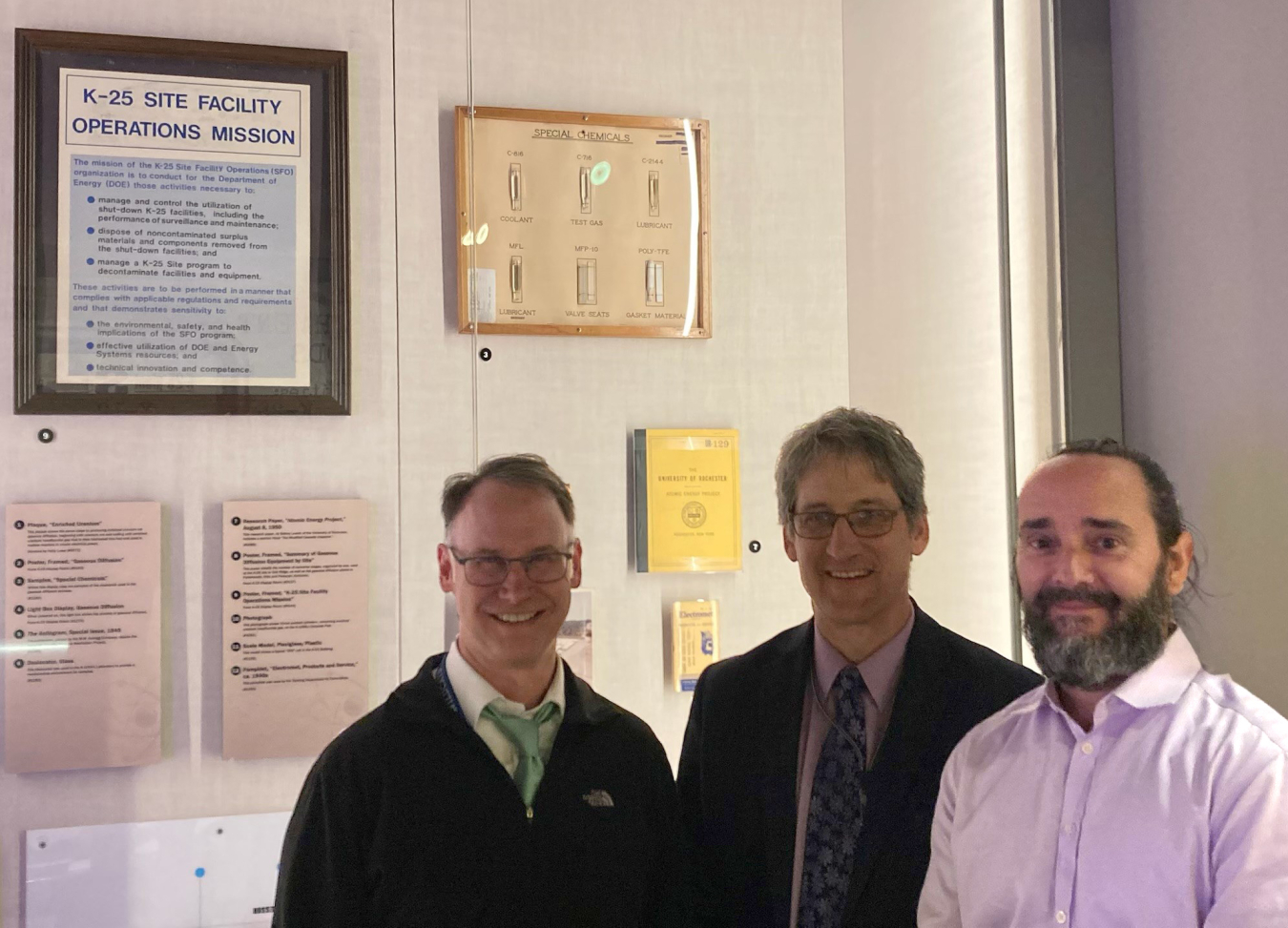Eric Boyle Recognized in Secretary of Energy Achievement Award
February 8, 2023When U.S. Department of Energy (DOE) Historian Eric Boyle transferred to the DOE Office of Legacy Management (LM) nearly three years ago, he said the Department’s origin story was his favorite part of the agency’s history.
“The Manhattan Project itself is such a fascinating story and time, with all sorts of amazing characters and monumental challenges faced, discoveries made, and things built.”
Back then Boyle could be found poking around the 6,000 cubic feet of archives and research materials at a DOE archives facility in Germantown, Maryland. He never imagined then that he’d be tapped to help unravel one of the most consequential mysteries from that era.
“It’s a very complex issue and a very difficult task to complete because you’re dealing with chemicals people didn’t think were dangerous for decades,” he said.
Boyle is referring to a massive federal effort to address the impacts of per- and polyfluoroalkyl substances (PFAS), also known as the “forever chemicals” which are manmade, highly persistent chemicals that don't occur in nature.
“The Department of Energy has a unique historic relationship to PFAS, which were first produced on an industrial scale for use in the Manhattan Project,” said Josh Silverman, chairman of the PFAS Coordinating Committee at the DOE. “A national focus on PFAS led to an array of federal and state-level regulatory approaches and policy initiatives, creating confusion across the DOE complex.”

(From left) Rob Seifert (EM), Josh Silverman (EHSS), and Eric Boyle (LM) at the Specialty Chemicals display at the K-25 History Museum where evidence of PFAS use was “hiding in plain sight,” according to Silverman.
Silverman, who leads the environmental division of the Office of Environment, Health, Safety and Security, reached out to Boyle at the beginning of a coordinated effort to identify sites where there were more than trace amounts of PFAS so a roadmap on how to address the problem could be created for DOE teams. Boyle had scant information to start with and dozens of questions.
“Where were they made, what processes were used for their development,” Boyle remembered thinking. “Even though the chemicals themselves weren’t classified, the details on how they were used remained classified. My first job was to figure out what was going on here.”
When his research using exhaustive search terms turned up nothing, Boyle remembered something Silverman had mentioned.
“I know they were used in Oak Ridge,” Boyle recalls Silverman saying.
Oak Ridge, Tennessee is a small town that played a big role in World War II history. The entire city took shape around an enormous 44-acre uranium enrichment complex built for the Manhattan Project. Once shrouded in secrecy, the gaseous diffusion plant known as K-25 has since been demolished and replaced by a corporate and industrial park known as the East Tennessee Technology Center as well as DOE offices containing thousands of still-classified documents.
Nearby is the K-25 History Center where artifacts and exhibits about the men and women who worked on the development of the first atomic bombs are open to the public. Among them is a sign that says, “What you see here, what you do here, what you hear here, when you leave here, let it stay here.” Boyle had his work cut out for him.
After digging through dozens of boxes with countless documents, Boyle hit pay dirt. He had found the needle in the haystack — a classified report that was written in 1946 after the K-25 building had been constructed.
“After it was redacted, there was one paragraph that identified a specific PFAS that had been used as a coolant at the K25 site — gaseous diffusion site,” said Boyle.
“As they were trying to construct the first gaseous diffusion plants (to separate and enrich the uranium isotopes), they discovered uranium hexafluoride gas was a corrosive substance and had to find a way to protect the equipment,” Boyle said. He pulled on that thread and began to unravel the mystery.
“The report identified the use of 150,000 gallons of a particular PFAS, but instead of being used as a protective barrier in the equipment, as we had suspected, it was being used as a coolant,” Boyle explained.
While published sources had traced the origins of Teflon (the name DuPont gave to a family of chemicals used to create nonstick surfaces) to work done in Oak Ridge during the Manhattan Project, this was the first concrete evidence of this particular use.
“DOE Historian Eric Boyle first identified the documents that established the large-scale use of PFAS at the Oak Ridge K-25 plant, then played a key role in developing the protocols for DOE sites and programs to use in assessing the historic uses of PFAS at their locations,” Silverman said. “He also scoured historic records held at DOE headquarters and at the National Archives facility in College Park, Maryland, to identify how and where PFAS were used in the 1940s, ’50s, and ’60s.”
For his intrepid research, Silverman included Boyle in his nomination for the Secretary of Energy Achievement Award that reads, in part, “Your participation has enabled the Department of Energy to gather information about current and past uses of PFAS, identifying previously unknown uses and releases; to develop policies, guidance documents, and educational materials to support more effective efforts to manage PFAS-related liabilities.”
Boyle says the accolade came as a big surprise, especially since the PFAS Policy Development Team is an interdisciplinary group of experts working across the DOE complex.
“I was very surprised and honored,” said Boyle.
For Boyle, a journey that started as a passion for preserving history has led to the discovery of a treasure map to unlock future mysteries. He says the thrill of that pursuit is reward enough.

